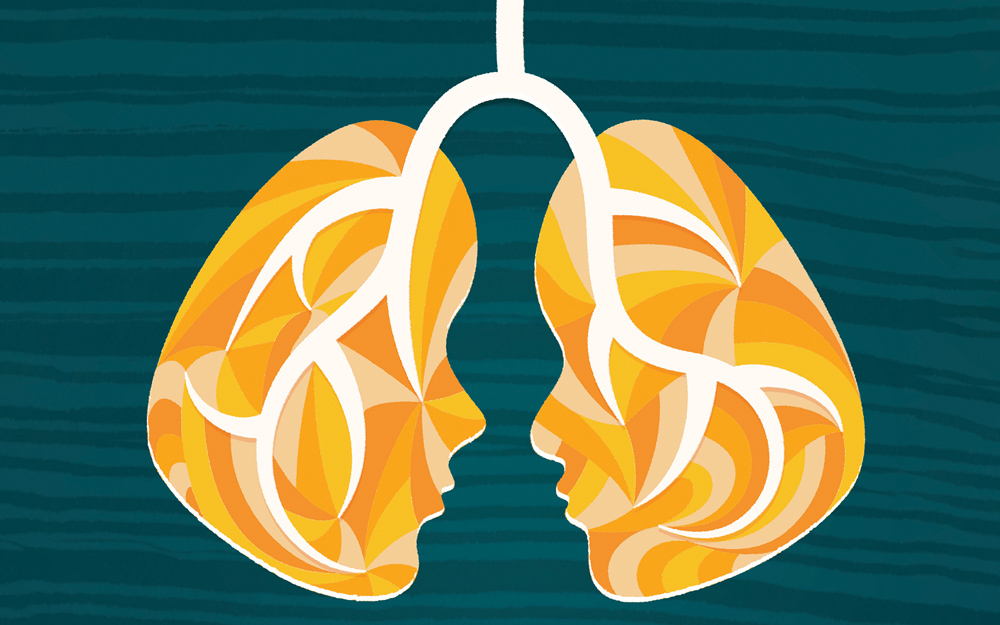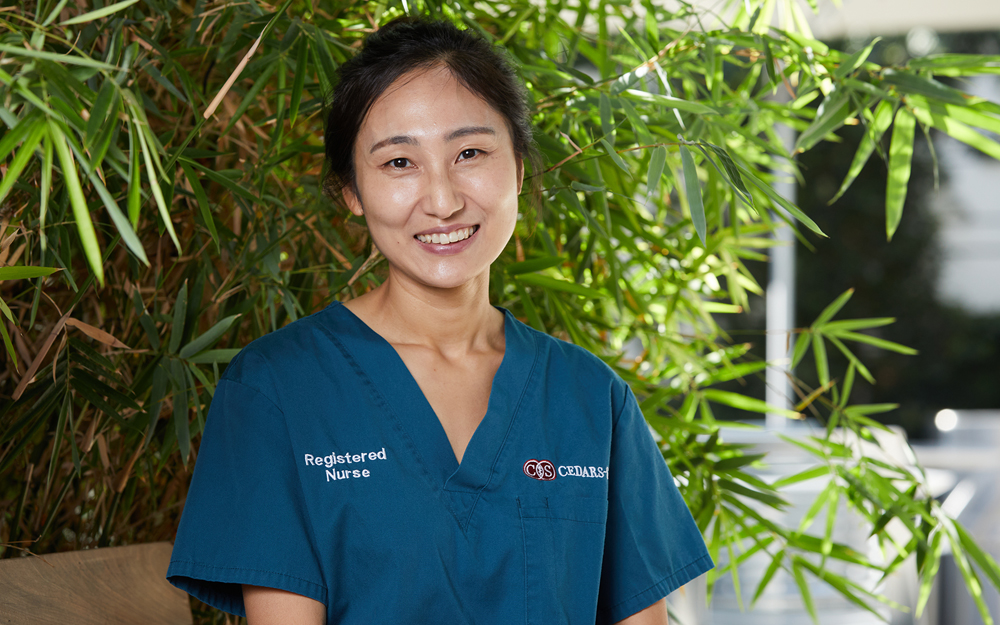An Underused Tool for Preventing Lung Cancer Death
Date
May 19, 2023

Date
May 19, 2023
Credits
Medical providers featured in this article
In Brief
{{cta-block}}
Imagine a tool that could potentially prevent 12,000 lung cancer deaths every year. Then imagine only a tiny fraction of people are reaching for it.
The tool is real: screening with a low-dose CT scan for those at highest risk of developing lung cancer. Sadly, only 5.7% of eligible current and former smokers in the U.S. were screened in 2021, according to the American Lung Association. That number is even lower in California, where fewer than 1% of eligible current and former smokers were screened.
"Screening can help lower that number even more because, unfortunately, by the time someone is presenting with symptoms, their lung cancer is likely already at a late stage. The earlier we can catch this disease, the higher the chance of a cure."
Ani Balmanoukian, MD
Oncologist at The Angeles Clinic and Research Institute, a Cedars-Sinai affiliate.
"The rates of screening for breast cancer, colon cancer, prostate cancer and cervical cancer are much higher than those we see for lung cancer," says Andrew Brownlee, MD, a Cedars-Sinai Cancer thoracic surgeon in Tarzana. "We need to look at the barriers to screening, and one of them is simply that there are very few people who are candidates and are aware that lung cancer screening exists."
Lifesaving Potential
Medicare first started covering annual lung cancer screening with a low-dose CT scan in 2015. (A CT scan is an imaging test that uses X-rays and a computer to make detailed images of the body.) In February 2022, Medicare expanded the number of people eligible for screening, lowering both the age requirement and the quantity of cigarettes someone needed to have smoked to qualify.
Lung cancer is currently the No. 1 cause of cancer death—though the numbers of deaths have been dropping due to better medications, immunotherapies and improved surgical options for patients.
"Screening can help lower that number even more because, unfortunately, by the time someone is presenting with symptoms, their lung cancer is likely already at a late stage,” says Ani Balmanoukian, MD, a Cedars-Sinai Cancer oncologist at Tarzana and West Los Angeles. "The earlier we can detect this disease, the higher the chance of a cure.”
Currently the five-year lung cancer survival rate in the United States is 22%, Dr. Brownlee says.
"That’s really low compared to almost all other cancers that are just as prevalent,” he says. "However, if you identify lung cancer in its earliest stage, then that five-year survival rate is over 90%. At that stage, we can often offer a surgery that will take the cancer out—and it’s curative.”
The first step to obtaining a screening is having a conversation with a primary care physician who can guide you through the pros and cons and refer you for a scan. You may have to raise the topic first. Often, if patients have already quit smoking, the subject doesn’t naturally come up during their routine physical.
Next, it’s important to choose a center with a screening program. Cedars-Sinai launched its lung cancer screening program earlier this year. Cedars-Sinai Cancer in Tarzana and The Angeles Clinic and Research Institute also have screening programs where patients can get a CT scan and access care all in one facility.
{{column-start}}
"The rates of screening for breast cancer, colon cancer, prostate cancer and cervical cancer are much higher than those we see for lung cancer. We need to look at the barriers to screening, and one of them is simply that very few people who are candidates are aware that lung cancer screening exists."
{{column-end}}
"The rates of screening for breast cancer, colon cancer, prostate cancer and cervical cancer are much higher than those we see for lung cancer. We need to look at the barriers to screening, and one of them is simply that very few people who are candidates are aware that lung cancer screening exists."
Andrew Brownlee, MD
A thoracic surgeon at Cedars-Sinai Cancer in Tarzana
Better Care Options for Lung Cancer
Lung cancer deaths are declining, and experts cite improved treatments as the reason for this decline—even more than decreasing smoking rates.
"That’s important for people to understand,” Dr. Balmanoukian says. "The fear and stigma around lung cancer contribute to people not wanting to be screened. We’re better than ever at treating this disease.”
From a surgical standpoint, advances in technology have improved the options available for patients.
"Robotic technology is used for both the biopsy and the surgery. For the biopsy, it allows us to be more precise and have a better chance of getting an accurate diagnosis,” Dr. Brownlee says. "For the surgery, it allows us to make small incisions, which means less pain and quicker recovery.”
In some cases, patients may undergo a diagnostic biopsy and, while they’re still under anesthesia, have the cancer surgically removed.
"The patient goes to sleep, and when they wake up, they find out that, yes, they had lung cancer, but they’ve also already had it treated,” Dr. Brownlee says. "That’s one of the most exciting developments in the surgical management of early-stage lung cancer.”
Targeted therapies and immunotherapies are also improving, Dr. Balmanoukian says. The specific genes of a tumor can guide oncologists to treatments that will work against an individual patient’s cancer.
"When we identify a cancer early, we have many options to treat patients,” she says. "If we can get past the barriers that are preventing people from being screened, we can save a lot of lives.”
Should You Get Screened?
Many patients who should be screened for lung cancer have no idea they are eligible. The U.S. Preventive Services Task Force recommends annual screening with a low-dose CT scan for people who fit all the following criteria:
- Age 50 to 80 and in good health
- Currently smoke or quit in the past 15 years
- Have a 20-pack-year smoking history
- A pack year is calculated by multiplying the number of packs of cigarettes someone smoked per day by the number of years they smoked. One pack a day for 20 years would be 20 pack years; two packs a day for 10 years would also qualify as 20 pack years.
Other important screening considerations:
- Doctors are advised to counsel anyone who qualifies for screening to quit smoking if they still smoke.
- Patients should talk to their doctor about the potential benefits and limitations of screening, as well as potential harms, such as false positives.
- The task force recommends being screened at a center with experience in lung cancer screening and treatment.





